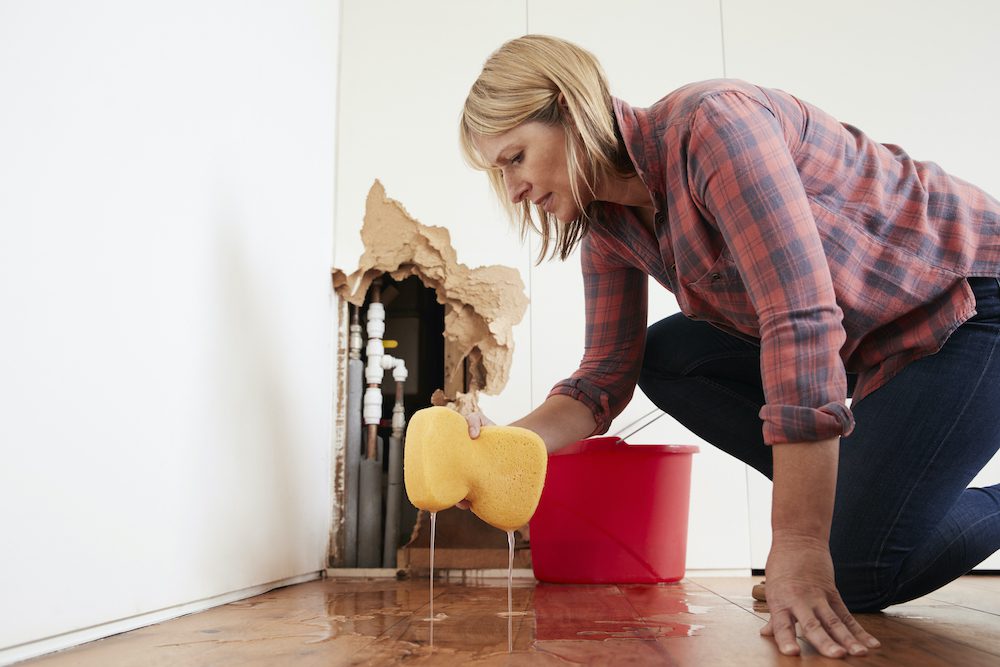We have come across this post relating to Hacks to detect leaks listed below on the internet and concluded it made good sense to share it with you in this article.

Early detection of dripping water lines can mitigate a prospective calamity. Some tiny water leakages might not be noticeable.
1. Analyze the Water Meter
Every residence has a water meter. Checking it is a surefire way that aids you uncover leakages. For beginners, switch off all the water sources. Guarantee nobody will flush, utilize the tap, shower, run the cleaning maker or dish washer. From there, most likely to the meter and watch if it will change. Since no one is utilizing it, there need to be no activities. That suggests a fast-moving leak if it relocates. If you find no modifications, wait a hr or 2 and examine back once again. This means you might have a slow leakage that could also be underground.
2. Check Water Intake
If you spot unexpected modifications, despite your intake being the very same, it means that you have leaks in your plumbing system. An abrupt spike in your costs shows a fast-moving leak.
At the same time, a stable rise each month, despite the exact same habits, shows you have a slow leakage that's also gradually rising. Call a plumber to completely check your home, specifically if you really feel a warm area on your flooring with piping beneath.
3. Do a Food Coloring Test
30% comes from commodes when it comes to water consumption. Test to see if they are running properly. Decrease specks of food shade in the tank and wait 10 mins. There's a leakage in between the container and also bowl if the shade in some way infiltrates your bowl throughout that time without flushing.
4. Asses Outside Lines
Do not fail to remember to inspect your outside water lines as well. Must water seep out of the link, you have a loose rubber gasket. One small leak can lose tons of water and also spike your water expense.
5. Assess the scenario as well as check
House owners must make it a practice to examine under the sink counters and also also inside cupboards for any type of bad odor or mold development. These 2 red flags show a leakage so timely focus is needed. Doing routine evaluations, also bi-annually, can save you from a significant issue.
More notably, if you understand your home is already old, maintain a watchful eye on your heaters, hoses, pipes and so on. Look for stainings and compromising as a lot of pipelines and also devices have a life expectancy. They will certainly likewise normally deteriorate due to tear as well as wear. If you believe leaking water lines in your plumbing system, do not wait for it to escalate. Call an expert plumber right away so you do not end up with an awful mess in your house.
Early detection of dripping water lines can reduce a potential catastrophe. Some tiny water leakages might not be visible. Checking it is a proven way that helps you discover leaks. One small leakage can throw away bunches of water as well as increase your water bill.
If you think dripping water lines in your plumbing system, don't wait for it to escalate.
How to Know If Your Home Has a Hidden Leak
Water Meter Reveals Inexplicable Water Usage
If you’d like to test whether or not there’s a leak somewhere in your home, you can do this using your water meter. Here is how to conduct the test:
Don’t use any water in your home for at least 30 minutes; this also means not turning on faucets or water-using appliances.
Go outside, and check your water meter for activity.
If your water meter shows that there was activity, even though no one was using any water, this proves that there is a leak in your home.Visible Mold or Mildew Growth
Leaks behind walls create moist, dark environments that allow mold and mildew to grow and thrive. Eventually, you might see mold growth forming on the wall closest to a hidden leak.
If mold is growing in an area that receives a high amount of moisture, such as a bathroom, it may simply be an indication that better ventilation is needed. However, if you see mold growth on a wall or the ceiling in an area where you would not expect, you probably have a hidden leak.
Musty, Mildew Odor
Sometimes you might not be able to see the mold or mildew that is growing as a result of a leak. However, the smell can give the problem away just as easily. If you catch a whiff of something musty, there’s a good chance that old water is collecting somewhere in your home that you can’t see.
Stained/Warped Walls, Ceilings, or Floors
When your home soaks up water, a variety of red flags can become visible, including ceiling stains, bubbling drywall, warped walls, and sagging floors. While these issues can be caused by excess humidity, they can also be signs that a pipe or plumbing connection has started leaking behind your walls.
Inexplicably High Water Bill
After a while, you get a general sense for what your water bill should be. If you own a pool or sprinkler system, your bill will tend to be higher during summer. However, if you receive a water bill that seems especially high, and you can’t figure out what caused it, then you may have a hidden leak somewhere that’s increasing your bill.
https://www.plumbingjoint.com/blog/2019/july/how-to-know-if-your-home-has-a-hidden-leak/

Do you enjoy reading up on Leaking water lines? Create a remark directly below. We would be interested to listen to your ideas about this page. Hoping that you come back again later on. Don't hesitate to set aside a second to distribute this blog posting if you liked it. We thank you for reading our article about Top leak detection hacks.